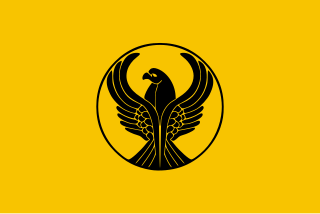
Anatolia, also known as Asia Minor, is a large peninsula in West Asia and is the western-most extension of continental Asia as it borders European Turkey. The land mass of Anatolia constitutes most of the territory of contemporary Turkey. Geographically, the Anatolian region is bounded by the Turkish Straits to the north-west, the Black Sea to the north, the Armenian Highlands to the east, the Mediterranean Sea to the south, and the Aegean Sea to the west. Topographically, the Sea of Marmara connects the Black Sea with the Aegean Sea through the Bosporus strait and the Dardanelles strait, and separates Anatolia from Thrace in the Balkan peninsula of Southeastern Europe.

The Anatolian side of Turkey is the largest portion in the country that bridges southeastern Europe and west Asia. East Thrace, the European portion of Turkey comprises 3% of the country and 10% of its population. East Thrace is separated from Asia Minor, the Asian portion of Turkey, by the Bosporus, the Sea of Marmara and the Dardanelles. İskilip, Çorum province, is considered to be the geographical center of Earth. Turkey is very vulnerable to earthquakes.

The Iranian plateau or Persian plateau is a geological feature spanning parts of West Asia, Central Asia, and South Asia. It makes up part of the Eurasian Plate, and is wedged between the Arabian Plate and the Indian Plate. The plateau is situated between the Zagros Mountains to the west, the Caspian Sea and the Köpet Dag to the north, the Armenian Highlands and the Caucasus Mountains to the northwest, the Strait of Hormuz and the Persian Gulf to the south, and the Indian subcontinent to the east.
Neapoli or Neapolis may refer to:

The Arabian Plate is a minor tectonic plate in the Northern and Eastern Hemispheres.

The Anatolian Plate is a continental tectonic plate that is separated from the Eurasian plate and the Arabian plate by the North Anatolian Fault and the East Anatolian Fault respectively. Most of the country of Turkey is located on the Anatolian plate. Most significant earthquakes in the region have historically occurred along the northern fault, such as the 1939 Erzincan earthquake. The devastating 2023 Turkey–Syria earthquake occurred along the active East Anatolian fault at a strike slip fault where the Arabian plate is sliding past the Anatolian plate horizontally.
Anatolian or anatolica may refer to:

The Pontic Greeks, also Pontian Greeks or simply Pontians, are an ethnically Greek group indigenous to the region of Pontus, in northeastern Anatolia. Many later migrated in various waves between the Ottoman conquest of the Empire of Trebizond in 1461 and the Russo-Turkish War of 1828–1829. Common migratory destinations included other parts of Eastern Anatolia, the former Russian province of Kars Oblast in the Transcaucasus, and the country of Georgia.

Pisidia was a region of ancient Asia Minor located north of Pamphylia, northeast of Lycia, west of Isauria and Cilicia, and south of Phrygia, corresponding roughly to the modern-day province of Antalya in Turkey. Among Pisidia's settlements were Antioch in Pisidia, Termessos, Cremna, Sagalassos, Etenna, Neapolis, Selge, Tyriacum, Laodiceia Katakekaumene, Adada (Pisidia) and Philomelium.
Anadolu is the Turkish form of Anatolia, which refers to a region of the world that is now part of the nation of Turkey, also known as Asia Minor.

The Anatolian Plateau is a plateau that occupies most of Turkey's surface area. The elevation of the plateau ranges from 600 metres (2,000 ft) in the west to 1,200 metres (3,900 ft). Mount Erciyes near Kayseri, is the highest elevation at 3,917 metres (12,851 ft). Ankara, the capital of Turkey, is located in the northwestern part of this plateau.

The Central Anatolia Region is a geographical region of Turkey. The largest city in the region is Ankara. Other big cities are Konya, Kayseri, Eskişehir, Sivas, and Aksaray.

The Eastern Anatolia Region is a geographical region of Turkey. The most populous province in the region is Van Province. Other populous provinces are Malatya, Erzurum and Elazığ.

The geology of Turkey is the product of a wide variety of tectonic processes that have shaped Anatolia over millions of years, a process which continues today as evidenced by frequent earthquakes and occasional volcanic eruptions.
Nicopolis was an ancient city and archbishopric in Epirus, now in continental Greece.

As of 2000 about 9300 species of vascular plant were known to grow in Turkey. By comparison, Europe as a whole contains only about 24% more species, despite having thirteen times the area.
Karaman is a town in south central Turkey, the provincial capital of Karaman Province.

Aintab plateau or Gaziantep plateau is a low, gently undulating plateau that forms the westernmost part of the Southeastern Anatolia Region in Turkey. It forms the northwestern end of the Arabian Plate where it meets the Anatolian Plate at the East Anatolian Fault. The plateau lies in the Turkish provinces of Gaziantep, Kilis, and Adıyaman. In Classical Antiquity, this was the region of Commagene. Gaziantep (Aintab) is located nearly in the south-center of the plateau.

The Central Anatolian deciduous forests, also known as the Central Anatolian woodlands and steppe, is a Palearctic ecoregion of the Temperate broadleaf and mixed forest biome. It is located in Central Anatolia, Asian Turkey.













